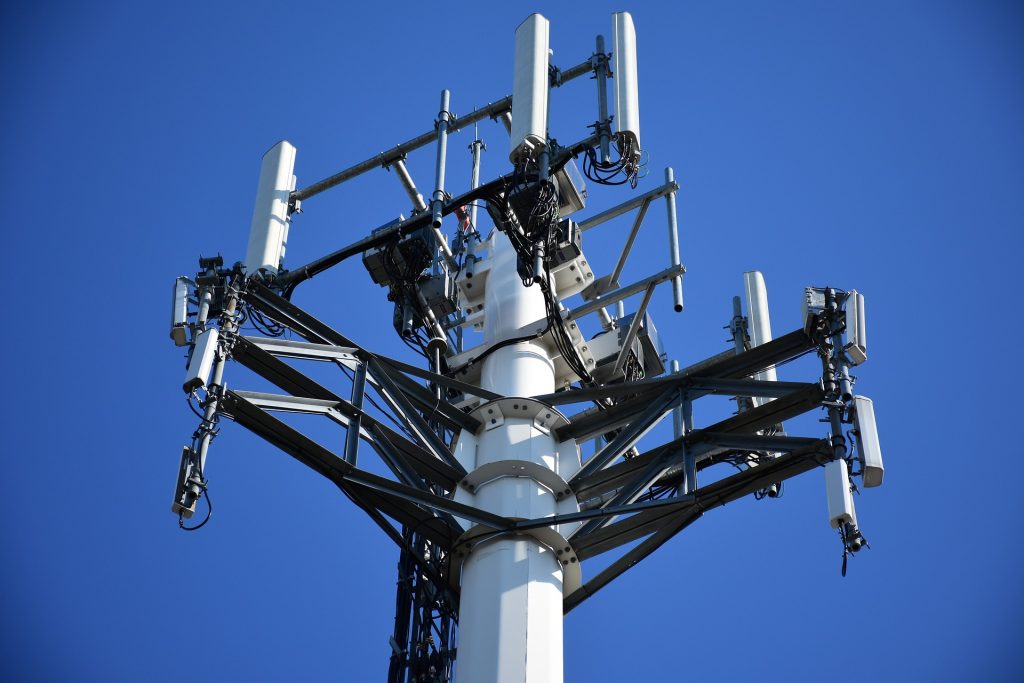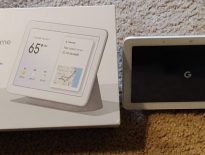Internet service is crucial for those of us who have cut the cord and turned their homes into a smart home. Although people complain a lot about their Internet connections, the truth is most ISPs (Internet Service Providers) do a good job of staying up. But for the paranoid, or for those who have shaky ISPs, cellular backup Internet service can save a lot of headaches.

Why I wanted cellular backup Internet
I’ll admit it. I’m a little bit paranoid. But it ain’t paranoia if it’s real, right? Every year we lose power where I live. It’s an older neighborhood with lots of trees that like to fall when the weather gets bad. Powerlines are mostly above ground. Last winter we were without power for 3 days, and without Internet service for longer.
After going through the experience of being really cold and some things not working quite right when the power comes back, I decided to fix things. First, we invested in a standby generator. No more long power outages for us.
Unfortunately, even when we got power last year, Internet service took much longer to fix. So I decided at some point I’d look for an inexpensive backup.
I saved quite a bit of money on my Internet costs by moving from Xfinity to CenturyLink. I figured I could take those savings and apply them to a cellular backup solution.
My cellular backup criteria
I actually had backup Internet for a month when I switched over to CenturyLink. I kept Xfinity going just to make sure CenturyLink was going to be stable enough before I cut the cord. We had one outage for a couple of hours (in the middle of the night) and Xfinity kicked right in.
Why not just keep Xfinity as my backup? Aside from price (too expensive for just a backup), when power or Internet goes out for long periods of time it’s usually because of damage to a utility pole. CenturyLink and Xfinity use the same utility poles around here, so chances are they’d both be out at the same time. I wanted something that would be more fault tolerant. That led me to cellular backup.
The other criteria I have for cellular backup are:
- Inexpensive – I don’t want to pay a lot for the right to use something I hopefully will rarely use. I look at this like insurance.
- No contract – I don’t want to be locked into a provider. Better deals come around often.
- Ability to increase bandwidth on demand – I don’t need to pay for a lot of data upfront, but when an outage happens, I want to be able to beef up my data on demand.
Choosing a hotspot device
There are a ton of hotspot devices out there, but I want one specifically designed to be used as an ethernet modem and that supports a bridge mode so I don’t have to deal with double NAT. Netgear makes a couple of these devices:
- Netgear 4G LTE Modem, models LB1120, LB1121, and LB2120. The LB1121 is just like the LB1120 except it supports POE. The LB2120 is a dual ethernet device that can handle the failover on its own.
- Netgear Nighthawk M1 Mobile Hotspot Router (MR1100).
The Netgear Nighthawk M1 is a very powerful hotspot device that does it all (wireless AC with 4×4 MIMO, large battery, media streaming from SD card, phone charging). However, it is 3 times the cost the LB1120.
The LB1120 is a better device for my situation for more than cost reasons. It doesn’t have a battery and it can’t be used as a Wifi Hotspot, just ethernet. I don’t need this device for Wifi connections, and I don’t plan to take it with me anywhere so I don’t need it to have a battery. Besides, previous hotspot devices I’ve had have almost always ended up with battery failures (swollen batteries) and not having that possibility is actually a plus for me.
I went with the LB1120 because I don’t need POE and I can use my pfSense router to do the failover. Netgear explicitly states it works with AT&T but the Amazon comments lead me to believe it works with T-Mobile, Sprint, and Verizon as well.
Choosing a cellular backup provider
There are a lot of data plans out there, but one of the complications is that they don’t all work with a dedicated hotspot. Lots of data plans work with phones and tablets only, but not hotspots. There are ways around this, but I want my backup to be 100% legit to eliminate the risk of the provider cutting me off for unapproved use.
I did a lot of research into various wireless providers. The most useful information turned out to be this best MVNO comparison table. It clearly lays out plans, costs, and whether or not they are compatible with mobile hotspots.
Speed for my house is important, so I am actually leary of MVNOs that cap data rates. I decided to focus on plans from the larger providers, AT&T, Sprint, Verizon, and T-Mobile. I added in Cricket because that’s what I use for my cell phone, and I’ve been happy with their service.
After researching, my top 3 choices were:
- Cricket Wireless Simply Data (3GB @ $25/month)
- AT&T Prepaid Hotspot (3GB @ $25/month)
- T-Mobile Hotspot (6GB @ $25/month)
From this, T-Mobile looked like the clear winner.

Note: I previously had a setup with Freedompop as my provider for free. I had spotty service from them, customer support wasn’t very helpful, and the hotspot I got from them actually stopped working. I might consider them in the future as the cheapest option (free til I need more data), but I crossed them off the list for now.
Hotspot complications
I purchased the Netgear LB1120 hotspot and attempted to sign up for T-Mobile’s service. When I went to enter my IMEI # T-Mobile said my device wasn’t supported! I’m aware you can often set up SIMs in supported devices and then move them to unsupported devices and they often keep working, but I didn’t want to do that for the reasons I wrote earlier.
Next, I tried the Cricket Simply Data plan. I ran into the same roadblock with the IMEI number. This time I even tried taking my LB1120 to a cricket store and they also said I couldn’t use it.
Next, I went with AT&T, and it worked without any problems. Sure it’s less data than T-Mobile would have given me for the same price, but most months that won’t matter. When I need to use it for failover I’ll probably have to buy more data in either case anyway. With AT&T I have a few options for increasing my data:
- I can add data in 1GB increments ($10 each!)
- I can upgrade to one of their other prepaid plans, $50/month for 10GB or $75 for 18GB. This is the option I’d probably take if I need to use it as my primary for a few days. I can always downgrade back to the $25 plan.
Putting it all together
I have pfSense set up a dual WAN failover mode, with CenturyLink fiber being my primary connection and AT&T as my backup connection. Here is a great guide for setting this up. In my tests, I was able to get 20Mbps up and down with AT&T, and that is sufficient in a failover situation.
Final thoughts
I wish 5G was available in my area. It would make an ideal backup (or perhaps even primary) WAN connection. I’ll certainly be monitoring 5G plans in my area over the next few years. For now, I’ll just stick with what I’ve got. Occasionally, I’ll see if there is a better data plan for me.
Having backup cellular Internet is only one part of my failover plan. I wrote an article on how to prepare your smarthome for many different outages that you should check out.
Are you looking for backup Internet for your home? Are you using cellular for home Internet access (primary or backup)? I’d love to hear from you about how it’s working!
Interested in supporting HomeTechHacker?
Have you found the content on this site useful? If so, are you interested in supporting me and this site? There’s no obligation of course, but I would really appreciate any support you can give. Below are a few ways you can show support:
- Share this site with your friends and on social media (use the sharing links at the end of this page for your convenience)
- Subscribe to this site
- Purchase one of my books, The Personal Cybersecurity Manual, The Home Network Manual or The Smart Home Manual, for yourself or as a gift
- Put a link to HomeTechHacker on a site you have access to. Be sure to let me know about it!
- Enroll in HomeTechHacker Academy for free and premium online home technology courses.
- Reach out to me via my contact page or Twitter and let me know something I should write about
- Shop at Amazon through my affiliate links and ads on these pages. See my disclosures for more details about affiliate links. You can also just shop from one of the links below:
- HomeTechHacker Shop: This is a listing of products that I use, have reviewed, and that I recommend
- HomeTechHacker Technology Advisor: This suite of tools will give you customized home technology product recommendations based on your needs
- My Amazon affiliate link: Just click on this link to go to Amazon and shop
Thank you! I really appreciate it!
This page contains affiliate links. If you purchase an item using an affiliate link I will receive a small commission at no cost to you. Affiliates do not influence my recommendations. Read my disclosures for more information.


